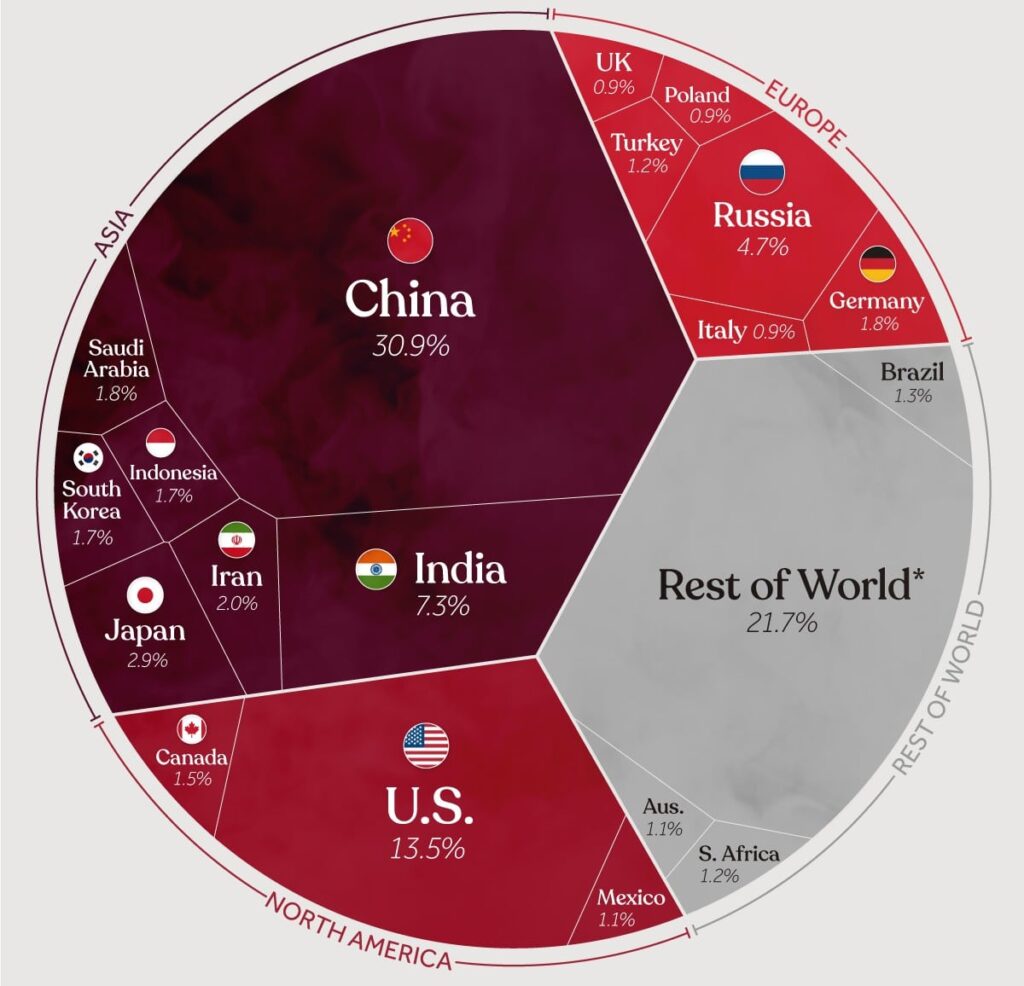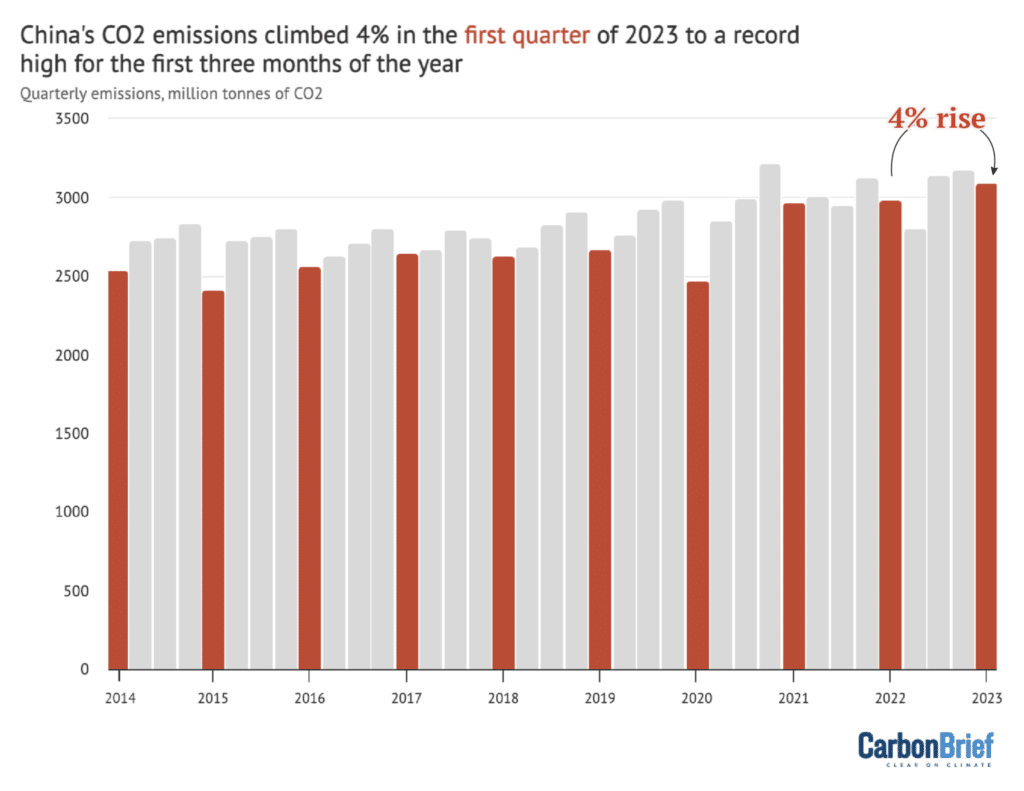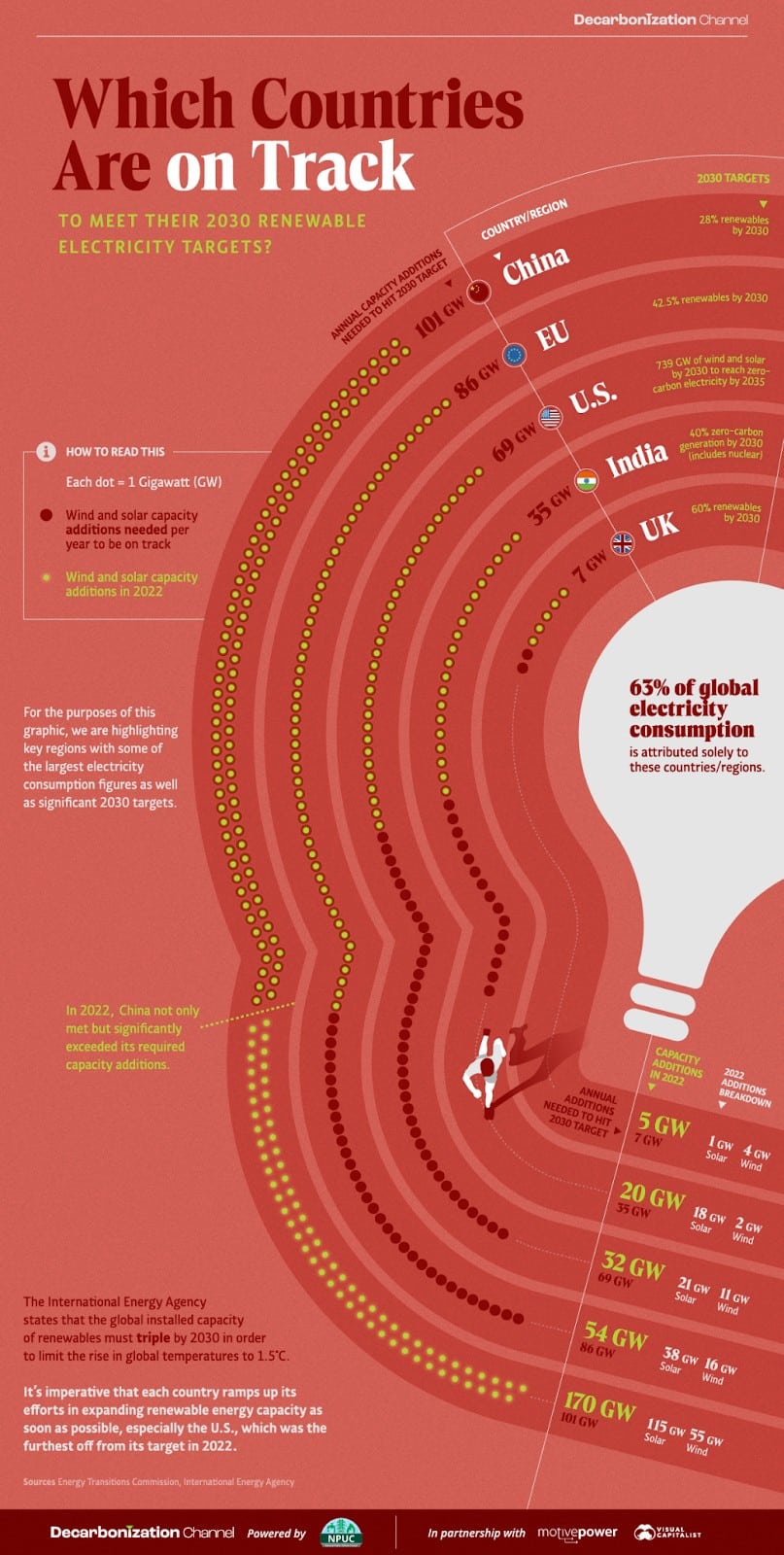With the worsening impacts of climate change, countries around the world are up to their heels to find solutions that can significantly reduce carbon emissions.
The top three major emitters – China, United States, and India – are responsible for emitting over 50% of global carbon emissions.
How Much CO2 Does Each Country Emit?
Burning too much fossil fuels intensifies the greenhouse effect, which is essential for keeping the Earth’s temperature suitable for life. This change is causing major shifts in the planet’s climate system that also led to worsening natural disasters.
As this year’s UN climate summit, COP28, is approaching, it’s important to know how much each country contributes to global carbon footprint. The COP28 in Dubai also represents a great opportunity to assess the progress of countries toward achieving their climate goals.
As per the Global Carbon Atlas data, interpreted by Visual Capitalist, 52% of the world’s carbon dioxide emissions in 2021 was caused only by three countries: China, U.S. and India. Apart from contributing the most to global emissions, they also have the highest number of population.

As shown above, China is the top carbon polluter (almost 31%) compared to the rest of the world (around 22%).
When it comes to carbon emissions per capita, the US tops the rank with around 15 (metric tons). China comes second with 7 Mt CO2 per capita while India has only around 2 Mt CO2.
All these three top carbon emitters have pledged to cut their footprint and reach net zero emissions. But they don’t share the same net zero target.
China targets to achieve net zero by 2060 while India plans to reach it ten years later, by 2070. Only the US’ net zero target is in line with the Paris Agreement objective of hitting net zero by 2050.
According to a World Bank Group Report, China needs as much as $17 trillion in investments to meet its net zero targets and transition to a low-carbon economy. This particularly involves investments in the power and transport sectors for green technologies and infrastructure.
As the biggest emitter focuses on economic growth, its carbon footprint will most likely hit an all-time high in 2023. Its CO2 emissions increased 4% in the Q1 this year, hitting a record high, according to the Carbon Brief report.

According to the Clean Investment Monitor database, clean energy is becoming one of the biggest industries in the U.S. In 2022, investments made in the sector reached a total of $213 billion.
Unlike China, India aims to hit net zero by 2070. To reach this, the third emitter will focus on the use of electric vehicles and achieve 3x more nuclear capacity by 2032.
However, as India becomes more developed, its carbon emissions may also continue to grow more. According to the International Energy Agency (IEA), its share of global emissions would go up to 10% by 2030.
How Much Renewables Must Be Achieved by 2030?
The IEA also projected that to reach global net zero target, renewable energy capacity installed must be 3x more the current level by the decade’s end.
As per the agency’s updated Net Zero Roadmap, renewables capacity should be at 11,000 GW by 2030. Reaching that capacity will achieve the largest emissions reductions.
The major polluters have also set ambitious targets for increasing their renewables by 2030, focusing on solar and wind power generation. The UK and the EU also have done the same.
Unfortunately, reports show that most of the countries are facing major hurdles to achieve their annual capacity targets.
Data from Visual Capitalist illustrates how each of the nations are progressing towards their 2030 renewables targets. The chart also shows how much they performed in 2022.

In contrast, the US and India were the furthest off the track from reaching their 2022 targets. They were able to add only 46% and 57% of what is required, respectively. Other countries in Europe successfully made some progress but still have to add more installations to hit their 2030 goals.
Together, China, US, India, EU, and the UK accounted for >60% of the world’s total electricity consumption. This underlines their big responsibility in decarbonizing the power sector.
As the global community grapples with the escalating impacts of climate change, attention turns to the top carbon emitters. The challenge extends beyond emissions, with hurdles evident in meeting renewable energy goals by 2030, emphasizing the critical role these major emitters play in the urgent shift toward greener and more sustainable practices.

